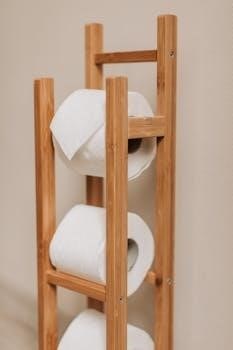Are you tired of cluttered entryways and scattered shoes? DIY wooden shoe rack plans in PDF format provide a stylish and practical solution. These plans offer step-by-step instructions, diagrams, and materials lists for building your custom shoe storage.
The Importance of Organized Shoe Storage
Organized shoe storage is more than just aesthetics; it is about functionality and preserving your footwear. Shoes scattered around the house create clutter, making it difficult to find pairs and contributing to a disorganized environment. A dedicated shoe rack, especially a DIY wooden one, provides a designated space for each pair, preventing damage and extending their lifespan. Organized storage also enhances safety by eliminating tripping hazards. Additionally, it simplifies cleaning and maintenance, allowing you to keep your floors tidy and presentable. Furthermore, a well-organized shoe collection saves time, making it easy to select the perfect pair for any occasion.
Benefits of Building Your Own Shoe Rack
Constructing a DIY wooden shoe rack offers numerous advantages over purchasing a pre-made one. Firstly, it allows for complete customization to fit your specific space and storage needs. You can tailor the dimensions, number of shelves, and overall design to perfectly match your entryway, closet, or garage. Secondly, building your own shoe rack is often more cost-effective, especially when using reclaimed or inexpensive lumber. Thirdly, it provides an opportunity to develop woodworking skills and create a personalized piece of furniture. Fourthly, you have control over the materials used, ensuring durability and aesthetic appeal. Finally, the satisfaction of building something with your own hands is unmatched.

Types of DIY Wooden Shoe Rack Designs
DIY wooden shoe rack designs vary widely, offering options for every style and space. From minimalist shelves to multi-tiered organizers, and even wall-mounted racks, there’s a perfect shoe storage solution waiting to be built.
Simple and Minimalist Shoe Rack
The simple and minimalist shoe rack is a popular choice for its clean lines and functionality. Often constructed from just a few boards, these racks prioritize space-saving design. These designs are easy to build with basic tools and materials. The focus is on creating a functional storage solution without unnecessary embellishments. Ideal for small apartments or entryways, a minimalist shoe rack keeps shoes organized and out of sight; Consider this option for a quick and effective DIY project. Often, these simple designs can be completed in just a few hours.
Multi-Tiered Shoe Rack
A multi-tiered shoe rack maximizes vertical space, offering ample storage for larger shoe collections. These designs typically feature multiple shelves stacked on top of each other, providing a dedicated spot for each pair. DIY plans for multi-tiered racks can range from simple to more complex, depending on the desired capacity and style. Consider the height and width of your space when choosing a plan. Using quality wood ensures durability and stability. Multi-tiered racks are excellent for families with many shoes. You can customize the number of tiers to suit your needs.
Wall-Mounted Shoe Rack
Wall-mounted shoe racks offer a space-saving solution by utilizing vertical space and freeing up floor area. These racks attach directly to the wall, creating a floating storage system. They’re ideal for small apartments or entryways where floor space is limited. DIY plans for wall-mounted racks often involve constructing a simple frame with shelves or using individual brackets to hold shoes. Ensure you use appropriate hardware and mounting techniques to support the weight of the shoes. Wall-mounted racks can also create a minimalist and modern look. Consider the wall material when installing.

Materials and Tools Needed
Before starting your DIY wooden shoe rack project, gather the necessary materials and tools. Wood, screws, sandpaper, and finishing supplies are essential. Basic tools include a saw, drill, measuring tape, and safety glasses for a safe and successful build.
Essential Wood Types and Dimensions
Selecting the right wood is crucial for durability and aesthetics. Pine, cedar, and plywood are popular choices. Consider using 1x6s and 2x2s for a simple rack. Dimensions depend on your design, often ranging from 12″ to 36″ in length. For the frame, 2×4 lumber is sturdy. Precise measurements are essential for accurate cuts, as consistency is key to a well-built and functional shoe rack. Adjust dimensions based on shoe size and storage needs. Always refer to your specific PDF plan for exact wood dimensions.
Tools Required for Construction
To build a wooden shoe rack, gather essential tools for efficient and precise construction. A saw (circular or hand saw) is needed for cutting wood pieces to the required dimensions. Use a drill with various drill bits for creating pilot holes and driving screws. A measuring tape and pencil are crucial for accurate measurements and markings. A sander will help smooth rough edges and prepare the wood for finishing. Clamps are useful for holding pieces together during assembly. A pocket hole jig can be used for strong and concealed joints. Safety glasses and ear protection are also a must.
Step-by-Step Guide to Building a Basic Wooden Shoe Rack
Constructing a basic wooden shoe rack is straightforward. This guide simplifies the process. It covers cutting, assembly, and shelf installation. Follow these steps for a functional and organized shoe storage solution. Begin by cutting the wood.
Cutting the Wood Pieces
Accurate measurements are crucial for a well-constructed shoe rack. Begin by referencing your chosen PDF plan. Mark the dimensions on your lumber using a measuring tape and pencil. Ensure precise cuts using a saw appropriate for the wood type. For shelves, 1×6 boards are commonly used, cut to the specified length. Consistency is key for uniform pieces. Cut all components according to the cut list provided in the plans. This includes the side supports and any bracing pieces. Double-check your measurements before each cut to minimize errors. Remember, accurate cuts lead to a sturdy and professional-looking shoe rack.
Assembling the Frame
Once your wood pieces are cut, begin assembling the frame. Refer to your PDF plan for the specific layout. Use wood glue and screws for a strong, durable bond. A pocket hole jig can be used to create hidden screw joints for a cleaner look. Ensure the frame is square by checking the corners with a carpenter’s square. Clamp the pieces together while the glue dries. This will ensure a tight and secure fit. Pre-drilling pilot holes will prevent the wood from splitting when inserting screws. Pay close attention to the alignment of the frame components. A solid frame is the foundation of your shoe rack.
Adding the Shelves
With the frame assembled, it’s time to install the shelves. Consult your PDF shoe rack plan for shelf placement and spacing. Use wood glue and nails or screws to secure the shelves to the frame. Ensure the shelves are level and evenly spaced. A level will help you achieve a professional look. Pocket holes can also be used for a seamless finish. Consider the weight capacity of your shelves and use appropriate fasteners. If you want to adjust shelves, use shelf pins. Accurate measurements are crucial. Double check before securing shelves. This prevents errors and ensures a sturdy shoe rack. Clamps will hold the shelves while the glue dries.

Finishing and Customization Options
Once your shoe rack is assembled, personalize it with finishing touches! Sanding, painting, or staining can enhance its appearance. Add decorative elements to match your home’s style. Consider adding a bench to create a stylish entryway.
Sanding and Painting/Staining
After assembling your wooden shoe rack, sanding is essential for a smooth finish. Start with a coarse grit sandpaper and gradually move to finer grits. This prepares the wood for paint or stain. Choose a paint or stain color that complements your home decor. Apply multiple thin coats, allowing each coat to dry completely before applying the next. Polyurethane can protect the wood and enhance its durability, thus adding a touch of personal style to your creation.
Adding Decorative Elements
Personalize your DIY wooden shoe rack by incorporating decorative elements to enhance the aesthetic appeal. Consider adding decorative trim around the edges for a refined look. Stencils can be used to create unique patterns or designs on the surface of the wood. Metal accents, such as knobs or corner protectors, can add an industrial touch. Experiment with different colors and textures to match your personal style. By getting creative with decorations, you can transform a functional item into a stylish focal point in your home. Remember to seal all decorations for enhanced durability.
Free PDF Plans and Resources
Numerous websites offer free PDF plans for wooden shoe racks. These resources often include detailed instructions, diagrams, and material lists. Explore online woodworking communities and manufacturer sites to find suitable plans and inspiration for your DIY project.
Where to Find Free Shoe Rack Plans Online
Finding free shoe rack plans online is easier than you might think! Numerous websites and woodworking communities offer downloadable PDF plans for various shoe rack designs. Websites such as Instructables, MyOutdoorPlans, and House of Wood often feature user-submitted projects with detailed instructions. Additionally, many woodworking blogs and forums provide free plans as a way to engage with their audience. Search for specific terms like “free shoe rack plans,” “DIY shoe rack PDF,” or “wooden shoe storage plans” to discover a wealth of resources and inspiration for your next project;
Understanding and Interpreting PDF Plans
Successfully building a shoe rack from PDF plans requires understanding how to interpret them correctly. Most plans include detailed diagrams, cut lists, and step-by-step assembly instructions. Pay close attention to the dimensions specified in the cut list to ensure accurate wood cutting. Study the diagrams carefully to understand how the pieces fit together. Look for annotations that indicate the type of joinery to be used, such as screws, nails, or wood glue. Some plans may also include exploded views, which show how all the components assemble in sequence. Familiarize yourself with common woodworking symbols and abbreviations.
Tips for Success
To ensure your DIY wooden shoe rack project is a success, focus on accuracy and precision. Proper joinery techniques are critical for a sturdy and long-lasting rack. A well-organized workspace will also contribute significantly to a smooth build.
Ensuring Accurate Measurements
Accurate measurements are the cornerstone of any successful woodworking project, especially when building a DIY wooden shoe rack. Begin by carefully reviewing the PDF plans and noting all dimensions. Use a high-quality measuring tape and a precision square to mark your cuts. Double-check each measurement before cutting to minimize errors. Consistency is crucial; therefore, use the same measuring tool throughout the entire project. Remember, even small discrepancies can accumulate and affect the final assembly. Taking your time and paying close attention to detail during this step will save you time and frustration later on.
Using Proper Joinery Techniques
Proper joinery is essential for creating a sturdy and durable DIY wooden shoe rack. The PDF plans will likely specify which joinery methods are best suited for the design, but common options include pocket hole joinery, wood screws, and even traditional methods like mortise and tenon joints. Pocket hole joinery is easy to use and creates a strong bond, especially when combined with wood glue. Ensure you use the correct screw length for your wood thickness to prevent the screws from poking through the surface. Wood glue should be applied generously to all mating surfaces before joining the pieces. Clamping the pieces together while the glue dries will ensure a tight and secure joint.

Safety Precautions
Prioritize safety when building your DIY wooden shoe rack. Always wear safety glasses, gloves, and a dust mask when cutting or sanding wood. Work in a well-ventilated area and follow all tool manufacturer’s instructions carefully to avoid accidents.
Working with Wood and Tools Safely
When embarking on your DIY wooden shoe rack project, safety is paramount. Always wear appropriate safety gear, including safety glasses to protect your eyes from flying debris and gloves to prevent splinters. Use power tools with caution, ensuring you understand their operation and safety features. Securely clamp wood pieces before cutting or drilling to prevent movement. Be mindful of your surroundings and keep your workspace clean and organized to minimize hazards. Never rush the process; take your time and focus on each step to avoid accidents and ensure a safe and enjoyable woodworking experience.
Proper Ventilation and Protective Gear
When working with wood finishes like stains, paints, or polyurethane, proper ventilation is essential to avoid inhaling harmful fumes. Work in a well-ventilated area, ideally outdoors or with windows and doors open. Consider using a respirator or mask to further protect your respiratory system. In addition to respiratory protection, wear gloves to prevent skin contact with chemicals. Eye protection, such as safety glasses, is also crucial to shield your eyes from splashes or fumes. Always read and follow the manufacturer’s instructions on all finishing products, and dispose of waste materials properly to maintain a safe working environment.
